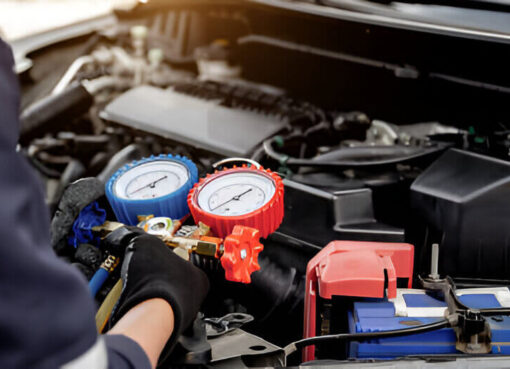A Complete Guide to Y Type Strainers: Design, Function, and Industrial Applications
In industrial piping systems, protecting critical components from debris is essential for efficiency, longevity, and safety. One of the most reliable solutions for this purpose is the Y-Type Strainer, also known simply as the Y strainer. These compact, versatile devices are widely used across industries such as oil and gas, water treatment, chemical processing, marine, and HVAC systems.
This article offers a comprehensive breakdown of Y-type strainers — from how they work and their key features to their installation, maintenance, and industry-specific benefits.
What Is a Y-Type Strainer?
A Y Type Strainer is a mechanical filtration device designed to remove unwanted solids from liquid, gas, or steam lines. It gets its name from its distinctive “Y” shape, where one leg of the Y houses a filtration screen and the other continues the pipeline’s main flow path.
Unlike large basket strainers, Y strainers are compact, cost-effective, and easy to install even in tight piping layouts. They are ideal for applications with low to moderate debris loads and can be installed either horizontally or vertically, provided the strainer leg is positioned downward for optimal debris collection.
How a Y Strainer Works
The operating principle of a Y strainer is straightforward yet highly effective:
- Fluid Entry – The process fluid enters the strainer body and flows toward the mesh or perforated metal screen located in the angled leg.
- Filtration – The screen traps solid contaminants such as rust particles, dirt, and scale.
- Debris Collection – Thanks to gravity, trapped particles settle into the lower chamber, preventing them from being carried downstream.
- Clean Fluid Exit – Filtered fluid exits the strainer and continues through the pipeline.
- Maintenance – Collected debris can be removed by unscrewing the cap or using a blow-off valve/drain plug.
This simple yet robust design ensures that downstream equipment — such as pumps, control valves, and heat exchangers — remains protected from clogging and damage.
Key Components of a Y Strainer
A Y type strainer is more than just a pipe fitting. It is carefully engineered to handle specific operating pressures, temperatures, and flow rates. Its main components include:
- Body – Made from materials such as stainless steel, carbon steel, brass, bronze, or cast iron, chosen according to application requirements.
- Screen Element – Can be made from fine mesh, perforated metal, or wedge wire. The mesh size determines the particle size filtered.
- Blow-Off/Drain Connection – A threaded or flanged outlet at the base to allow debris flushing without disassembling the unit.
- Cover or Cap – Removable for manual cleaning of the screen.
- Gaskets and Seals – Ensure leak-proof operation.
Material Selection and Variants
Y type strainers are available in a range of materials to suit diverse industrial environments:
- Stainless Steel – Corrosion-resistant, ideal for food processing, chemical plants, and marine applications.
- Carbon Steel – Cost-effective for general industrial use with non-corrosive fluids.
- Brass/Bronze – Common in potable water systems and HVAC applications.
- Cast Iron/Ductile Iron – Used in low-pressure water and air systems.
Some industries also use DIN-standard Y strainers, which adhere to European dimensional and performance standards for high-pressure, high-temperature pipelines.
Advantages of Y-Type Strainers
- Compact Design – Fits easily into tight spaces.
- Bidirectional Installation – Can be installed horizontally or vertically (leg must be downward).
- Cost-Effective – More affordable than basket strainers for low debris load applications.
- Versatility – Handles liquid, steam, and gas services.
- Equipment Protection – Reduces maintenance and extends equipment life.
Limitations
- Not Ideal for High Debris Loads – Basket strainers or automatic strainers may be better in such cases.
- Frequent Cleaning Required in Some Applications – Especially when filtering fluids with high particulate matter.
- Pressure Drop – Clogging increases pressure loss, requiring regular monitoring.
Typical Applications of Y Strainers
Y-type strainers are used in various industries, including:
- Oil & Gas Pipelines – To remove rust and scale before processing equipment.
- Chemical Processing Plants – To protect pumps and meters from clogging.
- HVAC Systems – To filter chilled water and prevent fouling of coils.
- Steam Systems – To remove condensate impurities that could damage traps and turbines.
- Water Treatment Plants – To capture sand, silt, and biological debris.
Installation Best Practices
- Orientation – Always position the strainer leg downward to allow debris to settle.
- Flow Direction – Follow the arrow marked on the body to ensure correct installation.
- Accessibility – Install where maintenance crews can easily access the cover or blow-off connection.
- Upstream Location – Place the strainer before pumps, valves, meters, or sensitive instruments.
Maintenance and Cleaning
Y strainers require periodic maintenance to remain effective:
- Shut off the pipeline flow before servicing.
- Remove the cap or open the blow-off valve.
- Clean or replace the screen as necessary.
- Inspect gaskets and seals for wear.
- Reassemble and test for leaks before resuming operation.
Automated blow-down systems can be added for continuous operation in some applications.
Conclusion
The Strainer is a small yet essential component in countless industrial processes. Its ability to filter out unwanted particles ensures the smooth operation of expensive equipment, reduces downtime, and extends the life of the entire system.
Whether used in steam lines, water systems, or chemical processing plants, a Y strainer offers a cost-effective, reliable solution for protecting your pipeline investments. By selecting the right materials, mesh size, and installation practices, industries can maximize efficiency and safeguard operations for years to come.







Leave a Comment